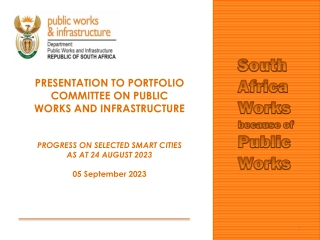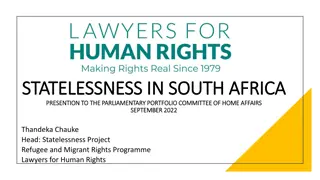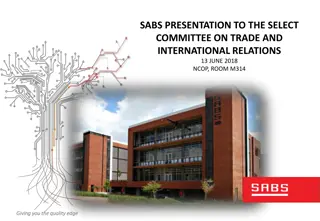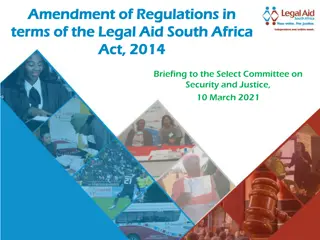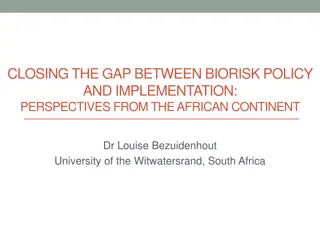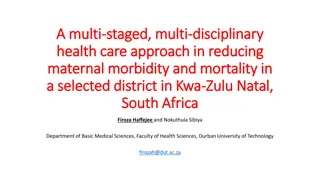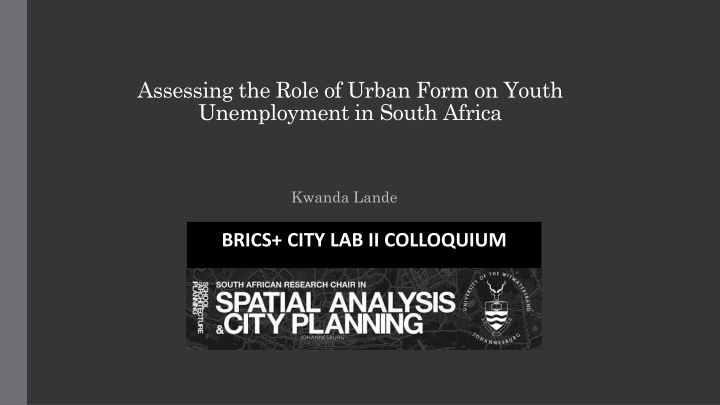
Impact of Urban Form on Youth Unemployment in South Africa
Addressing the issue of youth unemployment in South Africa, this study examines how urban form influences access to job opportunities for young people in poor neighborhoods. Factors such as spatial constraints, accessibility to employment locations, and the development of local networks play a significant role in determining youth unemployment rates. The importance of incorporating youth participation in governance and planning processes is highlighted as a means to address this pressing socio-economic challenge.
Download Presentation

Please find below an Image/Link to download the presentation.
The content on the website is provided AS IS for your information and personal use only. It may not be sold, licensed, or shared on other websites without obtaining consent from the author. If you encounter any issues during the download, it is possible that the publisher has removed the file from their server.
You are allowed to download the files provided on this website for personal or commercial use, subject to the condition that they are used lawfully. All files are the property of their respective owners.
The content on the website is provided AS IS for your information and personal use only. It may not be sold, licensed, or shared on other websites without obtaining consent from the author.
E N D
Presentation Transcript
Assessing the Role of Urban Form on Youth Unemployment in South Africa Kwanda Lande BRICS+ CITY LAB II COLLOQUIUM
Introduction High youth unemployment rate is not only a pressing socioeconomic problem - its a ticking time bomb. Urban youth unemployment is estimated at 36.6%. Youth unemployment in South Africa have been attributed to a combination of challenges facing labour market participants. The focus is on the role of spatialconstraints experienced by young people from poor neighborhood
Accessibility and Unemployment Young people from poor neighborhood experience accessibility issues to places of employment. The greatest proportion of growth in employment opportunities are taking place at a distance from the residential location of poor neighborhoods. Young people from poor neighborhoods live in communities with weak or non- existence of public Hustle transportation.
Local Networks and Unemployment The struggle of developing local networks to link with job opportunities, to provide knowledge of where the best locations are to look for work. Local networks are important since businesses recruitment strategies, especially small business, rely heavily on referrals. Privileged youth groups which have more access to transportation and connections with people who are employed spatial constraints to them are insignificant.
Looking ahead: Youth in Governance Youth should not only be addressed as a specific category, it should also be addressed as different groups because youth challenges are experienced differently. To better align difference in experiences, the incorporation of youth participation in planning processes is significant. In South Africa there has been a focus on youth, for example, the establishment of the National Youth Development Agency (NYDA). The attention to youth is not translating into meaningful changes in the lives of a significant proportion young people. Finding case experiences, internationally of youth participation in planning to be explored for good practice that might be applied in the South African context.
Reference Harrison (2013) South Africa s cities of hope : Assessing the role of cities in creating opportunity for young people, Paper prepared for the Centre for Development and Enterprise, commissioned for Cities of Hope project, June 2013. Holzer, H. J., Ihlanfeldt, K. R., and Sjoquist, D. (1994) Work, Search, and Travel among White and Black Youth, Journal of Urban Economics, 35, 320-345. Hinks, T. (2008) Poverty, Networks and Location Determinants of Job Search in South Africa. Journal of International Development, 20, 117-131. Banerjee, A., Galiani, S., Levinsohn, J., McLaren, Z., and Woolard, I. (2008). Why has Unemployment Risen in the New South Africa? The Economics of Transition, 16(4), 715 740. Hoekman, G. (2015) The Spatial Mismatch Hypothesis and the use of social networks for job search in Cape Town, A minor dissertation submitted in partial fulfilment of the requirements for the award of the degree of Master of Philosophy in Development Studies, Faculty of the Humanities University of Cape Town. Rospabe, S. and Selod, H. (2003) Does City Structure cause Unemployment ? The case study of Cape Town, Paper presented at the World Bank Urban Research Symposium, Urban Development for Economic growth and Poverty Reduction, December 15- 17, 2003, Washington, D.C., USA Seekings, J. (2010) Race, class and inequality in the South African City. In The Blackwell Companion to the City, Bridge, G. and Watson, S. (eds), (new edition, Blackwell Martin, R. (2004). Can Black workers escape spatial mismatch? Employment shifts, population shifts, and Black unemployment in American cities. Journal of Urban Economics, 55, 179-194. Gobillon, L., Selod, H. and Zenou, Y. (2007). The mechanisms of spatial mismatch, Urban Studies, 44, 2401-2427. Hellerstein, J., Neumark, D. and McInerney, M. (2008). Spatial mismatch or racial mismatch? Journal of Urban Economics, 64, 464-479.

